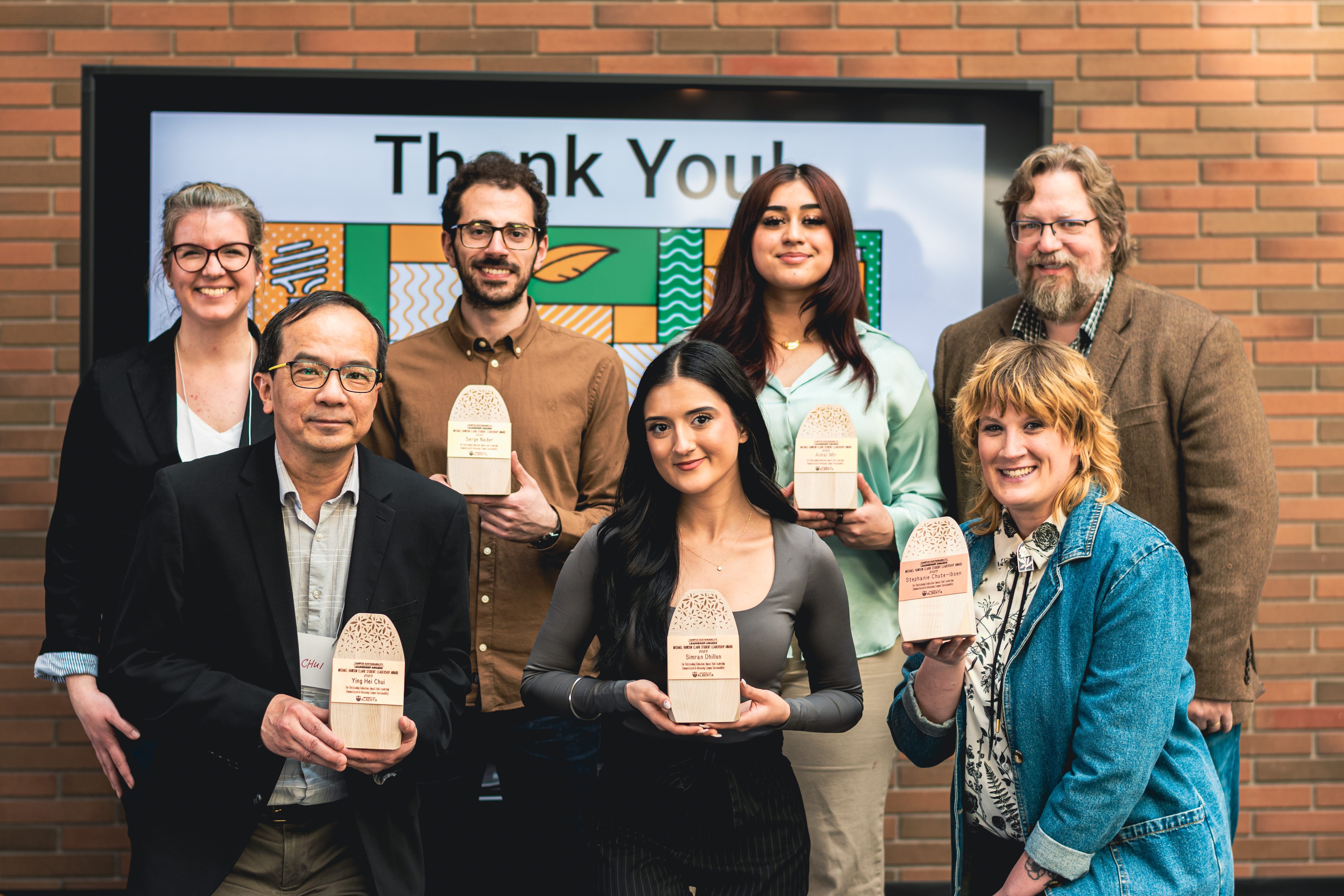Making solar-powered cities at the speed of light
Dr. Mustafa Gül, an associate professor in the Department of Civil and Environmental Engineering, sees a cityscape dotted in solar panels when he envisions Edmonton’s future–and he thinks that by using a new application he and his students developed, we can get there at light speed.
“Buildings account for over 30 per cent of carbon dioxide emissions in North America,” Gül said. “We created an application that can help curb those emissions by making solar energy more accessible. It’s an automated system that gives you the best solar photovoltaic (PV) layout for any building that appears in Google maps. The potential of this is huge, because you could do this to an entire downtown, an entire city.”
The project started when the U of A’s Energy Management and Sustainable Operations (EMSO) approached Gül with a plan to look into adding solar panels to North Campus buildings. They wanted to design a solar panel layout using building blueprints and photographs, but Gül had an idea to streamline the process.
“I was interested in doing it in more of an automated fashion, and I was lucky Michael Versteege and his team at EMSO were supportive and provided extra funding to make this a bigger project,” he said.
The research team built an application that uses freely-available 3D satellite imagery and models from Google Earth to trace the outlines of building rooftops and find how to position panels for maximum sunlight exposure. Using only this application, they found ideal rooftop solar panel layouts for the Cameron Library, the Earth and Atmospheric Sciences Building, and the Administration Building. The method will soon be applied across all of North Campus.

Aerial view of North Campus
Adding solar to buildings is not as simple as bolting down panels and wiring them to an electrical system, according to Gül. Many factors, such as shadows from objects around the building, the tilt of panels, the direction of sunlight, rooftop irregularities, and building location, must be considered in placement so that the panels get just the right amount of light. The system must also be tailored to meet the building’s expected electricity consumption. An inadequate layout can make solar panel systems more than 50 per cent less effective at capturing energy, and, in some cases, can result in energy being sent back to the grid instead of into buildings.

Photo by Kindel Media via Pexels
The application accounts for all of these factors and does so without the need for much human labour. By taking the 3D images and models from Google Earth and modifying them to get a clearer picture of the height of certain building features, it generates layouts automatically.
It also gives solar customers options for tailoring their panel layout, said Nima Narjabadifam, a graduate student in the lab and lead author of a recently-published study on the method.
“Imagine yourself as the owner of a building and you are interested in using solar panels, but don’t know how you are going to use them,” Narjabadifam said. “If the owner is looking entirely at the cost of installing panels and hoping to save money, the layout is going to look different than if the owner is trying to make a large environmental impact. We are trying to satisfy your vision economically and environmentally. Our application can do this, and we can recommend a layout for you.”
Narjabadifam said that although the study is focused on large buildings, specifically buildings on the U of A campus, the framework they created could be applied to almost any rooftop in the near future.
Dr. Mustafa Gül sees the solar panel app as one part of a larger project to build “smart cities,” where digital technologies collect large amounts of data for the smooth operation of urban systems. His lab is doing lots of experimental work using smart technology to change urban spaces for the better.
“I’m hoping my research will help build smart, sustainable, resilient, and energy-efficient buildings in future cities,” he said. “We are all in this together, and there are so many problems we want to work together to resolve. But for the civil engineers, it will be mostly cities, infrastructure and energy. There is so much we can do.”
***
Mustafa Gül is an affiliate of the Sustainability Council. Learn more about the benefits of joining our affiliate network.



